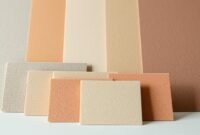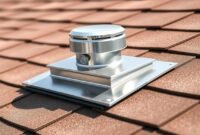Seeing a brown stain on your ceiling can be alarming. These stains are not just ugly; they warn of possible serious damage. Water can quietly harm your home’s structure, leading to costly repairs if not fixed.
Many homeowners face ceiling leaks that begin as small brown spots. These spots can grow from simple cosmetic issues to major structural problems. It’s important to find the cause and act fast to prevent bigger damage.
In this guide, I’ll show you how to spot the sources of brown ceiling stains. You’ll learn how to protect your home’s look and structure. We’ll cover roof leaks and plumbing issues, helping you fix these problems.
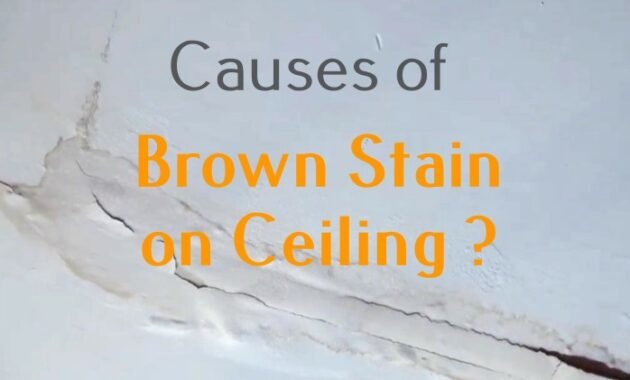
Read also: Causes of Brown Stain on Ceiling and How to Fix It
Understanding Brown Ceiling Stains: A Homeowner’s Guide
Seeing brown spots on your ceiling can mean trouble. They might show water damage or other serious issues. These stains are not just a cosmetic problem. They could point to bigger structural problems that need quick action.
Spotting brown spots early can save you money and prevent big damage. Let’s explore how to identify and understand these ceiling stains.
Common Signs of Ceiling Damage
Brown spots show up in different ways:
- Discoloration ranging from light tan to dark brown
- Soft or bubbling ceiling texture
- Musty odors near the stained area
- Visible water rings or circular patterns
Why Immediate Action is Important
Ignoring brown spots can cause big problems. Water damage can lead to:
- Structural weakness in your ceiling
- Mold growth
- Potential electrical hazards
- Decreased home value
Types of Brown Stains to Watch For
| Stain Type | Potential Cause | Urgency Level |
|---|---|---|
| Light Brown Spots | Minor Water Leak | Medium |
| Dark Brown Stains | Serious Water Damage | High |
| Circular Brown Marks | Roof or Plumbing Leak | Critical |
Understanding brown spots and acting fast can protect your home. It keeps your home safe from water damage and keeps it strong. Always choose to fix problems early to avoid expensive repairs later.
Water Damage: The Primary Culprit Behind Ceiling Stains
Water damage is the sneaky troublemaker behind those unsightly brown stains on your ceiling. These discolorations aren’t just an eyesore. They’re a critical warning sign of possible structural issues lurking above your head.
When water finds its way into your ceiling, it leaves behind telltale signs of moisture intrusion. Ceiling leaks can come from many sources, creating those distinctive brown stains. These stains spread across your overhead surface. Understanding these water damage patterns is key to preventing extensive home repairs.
- Roof leaks from damaged shingles
- Plumbing pipe condensation
- HVAC system malfunctions
- Bathroom and kitchen water line breaks
The science behind these brown stains is simple. As water seeps through building materials, it carries mineral deposits and rust. When the moisture evaporates, these substances create the characteristic brown discoloration on your ceiling. If left unchecked, water damage can lead to serious structural problems like wood rot, mold growth, and compromised ceiling integrity.
I recommend addressing any brown stain on ceiling immediately. Quick detection and professional intervention can save you thousands in repair costs. It also protects your home’s overall health.
Identifying Roof-Related Brown Stain on Ceiling
Seeing brown spots on your ceiling means you need to fix your roof fast. Your roof protects your home from the outside. But, it can get damaged and let water in.
Roof problems can be tough for homeowners. Knowing where brown stains come from helps you act quickly. This way, you can avoid bigger damage.
Missing or Damaged Shingles
Shingles that are missing or damaged let water into your home. Look out for:
- Curling or cracked shingle edges
- Visible gaps in roofing material
- Granules accumulating in gutters
- Discolored or warped roofing sections
Flashing Failures
Flashing is key for keeping water out around joints and corners. If it fails, water can get into your home. This causes brown spots on your ceiling.
Skylight and Chimney Leaks
Skylights and chimneys can let water in if not sealed right. Check these spots often. This helps stop roof problems before they start.
Seeing brown spots means you should check your roof closely. Or, get a roofing expert to find and fix leaks.
Plumbing Issues Leading to Ceiling Discoloration
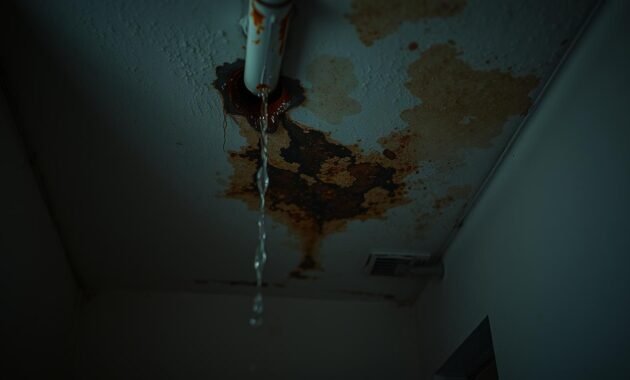
Water damage in your home can often be traced back to plumbing problems. These issues can lead to brown stains on your ceiling. Many homeowners face ceiling leaks from hidden pipes in walls and floors.
Plumbing issues can cause serious water damage that might not be noticed until it’s too late. Ceiling leaks often start in certain areas:
- Bathroom pipe connections
- Kitchen sink plumbing
- Washing machine water supply lines
- Upstairs bathroom fixtures
Spotting plumbing problems early can save you a lot of money. Look out for these signs of water damage:
- Soft or sagging ceiling areas
- Musty odors near the stained section
- Discoloration spreading gradually
- Bubbling or peeling paint
Acting fast on these signs can help avoid big damage to your home. It’s a good idea to have plumbing checked regularly. This way, you can catch leaks before they get worse.
The Impact of Poor Attic Ventilation and Condensation
Attic ventilation is key to keeping your home safe. Without good airflow, moisture builds up. This creates a perfect spot for mold and damage.
Bad attic ventilation turns your attic into a moisture trap. Warm air gets stuck and meets cold surfaces. This causes condensation, leading to insulation problems and ceiling stains.
Moisture Buildup Patterns
Moisture buildup in attics follows certain patterns:
- Condensation forms on cold surfaces during temperature changes
- Humidity levels go up, making the air damp
- Insulation gets damaged, making it less effective
Seasonal Factors
Each season brings its own attic ventilation challenges:
- Winter: Warm air from inside meets the cold roof
- Summer: Heat makes moisture levels higher
- Spring/Fall: Quick temperature changes cause more condensation
Prevention Methods
To keep your attic dry, you need to act early:
- Put in the right ridge and soffit vents
- Make sure you have enough insulation
- Use vapor barriers
- Check your attic often
By tackling attic ventilation issues, you can avoid expensive damage. And keep your home healthy.
HVAC System Leaks and Their Effects
In my years of home maintenance, I’ve seen how HVAC systems can quietly cause water damage and ceiling leaks. These systems might seem harmless, but neglect can lead to big problems.
Read also: What Causes Water Heater Igniter Won’t Spark
Water damage from HVAC systems often comes from a few main sources. These include:
- Clogged condensate drain lines
- Damaged or cracked drain pans
- Improper system installation
- Malfunctioning condensate pump
Knowing the risks is key to stopping ceiling leaks. A clogged drain line can cause water to overflow, leading to moisture in your ceiling. This moisture can cause brown stains and harm your home’s structure.
Regular HVAC maintenance can greatly lower the risk of water damage. I suggest getting professional inspections at least twice a year. These checks can spot problems early, saving you from expensive fixes.
Signs of HVAC-related ceiling leaks include:
- Unexplained water spots near air vents
- Musty odors around your HVAC system
- Increased humidity in specific rooms
- Visible moisture around the unit
Being proactive in home maintenance is your best way to avoid water damage. By watching for signs and fixing HVAC issues fast, you can keep your home safe and avoid expensive repairs.
Bathroom-Related Ceiling Stains: Causes and Solutions
Water damage in bathrooms can quickly become a homeowner’s nightmare. It often leaves unsightly brown stains on your ceiling. Bathrooms are high-moisture environments that need careful maintenance to prevent water-related problems.
Bathrooms pose unique challenges for home maintenance. The constant water use and complex plumbing systems create many leak points. These can harm your home’s structural integrity.
Common Bathroom Leak Sources
- Deteriorating caulk around bathtubs and showers
- Cracked toilet seals
- Loose pipe connections
- Damaged shower pan
- Corroded water supply lines
Prevention Tips
- Inspect bathroom seals and caulking annually
- Check pipe connections for signs of moisture
- Repair any grout or tile damage immediately
- Install water leak detection sensors
- Maintain proper bathroom ventilation
Regular home maintenance can greatly reduce water damage risk. By being proactive and fixing plumbing issues early, you can avoid costly ceiling repairs and structural damage.
Professional Assessment and Repair Options
Dealing with ceiling stains? A pro assessment is key for home upkeep. Water damage can be hard to spot, and DIY fixes might not solve the problem. Experts can save you time, money, and prevent bigger issues.
Roof repair pros use special tools and know-how to find stain sources. They do a detailed check that includes:
- Moisture mapping of affected areas
- Thermal imaging to detect hidden water damage
- Structural integrity assessment
- Identification of possible leak sources
Choosing the right pro is important. Look for certified contractors with water damage and roof repair experience.
| Repair Option | Estimated Cost Range | Complexity |
|---|---|---|
| Minor Leak Repair | $300 – $1,000 | Low |
| Partial Roof Replacement | $1,500 – $5,000 | Medium |
| Full Roof Replacement | $5,000 – $15,000 | High |
Professional repairs might seem pricey, but they stop bigger problems and keep your home’s value up. Always compare quotes and check a contractor’s credentials before deciding.
DIY Solutions for Minor Ceiling Stains
Dealing with brown spots on your ceiling can be frustrating. But, many stains can be fixed with simple home maintenance. First, find out why the stain happened and fix it completely.
Ready to fix those brown spots? I’ll show you some DIY solutions to make your ceiling look new again.
Cleaning Techniques for Light Stains
For minor stains, try these cleaning methods:
- Mix equal parts white vinegar and water
- Use a soft sponge to dab the stain
- Let it dry completely before treating again
- Test a small area first to avoid damage
Painting Over Ceiling Stains
After fixing the stain’s cause, painting can give your ceiling a fresh look:
- Clean the stained area well
- Apply a stain-blocking primer
- Use a roller with an extension pole for even coverage
- Choose ceiling paint that matches your current color
Professional Help Considerations
While many tasks are DIY, some stains need a pro. If the stain is big, won’t go away, or shows water damage, get a pro. They can check for structural issues and fix them right.
Fixing stains fast can stop bigger, more expensive problems later.
Preventive Maintenance to Avoid Future Staining
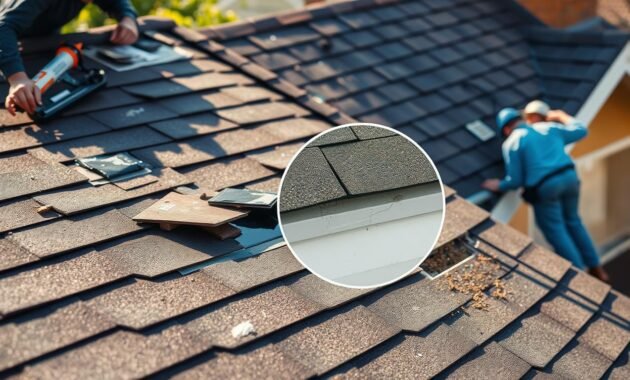
Keeping your home safe from ceiling stains starts with being proactive. Regular roof checks and attic ventilation inspections can save you a lot of money and time. As a homeowner, I’ve seen this firsthand.
Here are some key steps to avoid ceiling stains:
- Do annual roof inspections to spot problems early
- Clean your gutters and downspouts twice a year
- Make sure attic ventilation is working right
- Seal any spots where moisture might get in
- Keep indoor humidity levels steady
Fixing your roof is important when you see damage. Small problems like cracked shingles or loose flashing can turn into big water issues. I suggest getting a pro to check your roof every 2-3 years.
Good attic ventilation is key to stopping moisture buildup. Without it, condensation can happen, leading to water damage and stains. Adding ridge vents or proper ventilation systems can help a lot.
Read also: Is Metal Roof Ridge Vent Foam Worth Buying?
Putting in some effort for home maintenance can really help. Regular inspections and quick repairs are your best defense against water damage. This way, you can avoid costly ceiling stains.
Tips for Long-Term Ceiling Protection
Keeping your home’s ceilings safe is all about being proactive. It’s much easier to stop damage before it starts. Fixing big ceiling problems can be very costly and time-consuming.
Understanding how to prevent damage is key. Regular checks are your best defense against harm. Make a schedule for maintenance to spot issues early.
- Conduct quarterly visual inspections of your ceilings
- Check for signs of moisture or water damage
- Maintain proper attic ventilation to prevent mold growth
- Inspect roof and plumbing connections annually
Insulation issues can lead to big ceiling problems. Focus on these areas:
- Seal any gaps around windows and doors
- Ensure proper attic insulation
- Use moisture-resistant materials in high-humidity areas
- Install adequate ventilation in bathrooms and kitchens
Stopping mold growth is vital for ceiling safety. Keep humidity levels between 30-50% with dehumidifiers or air conditioning. Watch areas like bathrooms, kitchens, and basements closely. Being proactive will help you keep your ceilings looking great for years.
Conclusion
Dealing with a brown stain on your ceiling can be tough. But knowing where it comes from helps you act fast. I’ve found that catching it early and keeping up with home care are key to avoiding big problems.
Spotting brown spots early means you can fix the issue before it gets worse. Roof leaks, plumbing issues, or bad ventilation can all cause stains. Fixing them quickly saves money and keeps your home safe.
Home care is more than just fixing things. It’s about stopping problems before they start. Regular checks, knowing where moisture comes from, and knowing when to call experts are important. This way, your ceilings stay clean and your home’s value stays high.
Every brown stain has a story to tell about your home’s needs. Listen to it, act fast, and your ceilings will stay beautiful and strong.
